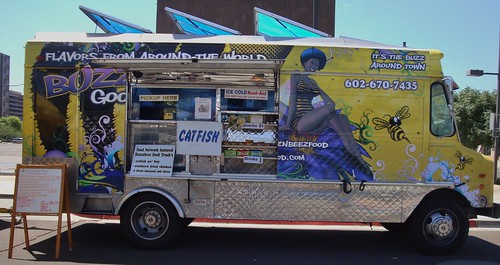6 Questions You’ll Eventually Ask About Your Food Truck
When you begin any type of new business, it’s hard to imagine what will go through your mind five, 10, or even 15 years from now. It’s all new, fresh, and exciting, and hopefully lucrative too. But eventually you’ll be asking a few questions about your business, how things are going, and what the future holds. At some point, you’ll need to reflect on all these things.
1. Are We Offering What the Customers Want?

Image via Flickr by Elieen M. Kane
If you’re turning a profit, that’s good. But to stay consistently profitable and increase profits over time, you need to find out if you’re really providing what the customers want. Customer surveys are helpful, as are social media pages like Facebook and Twitter. Find out what your customers think.
Is the service slowing down? Is the quality dropping? Is the menu satisfactory? Do you offer enough extras, such as sauces and side dishes? Find out what makes people choose to patronize your food truck, and what other things you can be doing to make the experience one they want to have regularly and share with other new patrons.
2. Are We as Efficient as Possible?
There are always ways to boost efficiency in the workplace, even in as small an environment as the food truck. Better training, more employees, fewer employees, more time to set up in the morning — there are many ways to approach efficiency. Look at how things are being done now, from the point at which you get your supplies from vendors to the point of sale. Where is time being wasted? At what point are products being wasted?
Identify these places for improvement, and develop ways to improve the efficiency of the truck. Efficiency might mean more prep work ahead of time for fewer mistakes in assembling orders in the truck. Or it might mean showing employees the best ways to use equipment for the shortest preparation and service.
3. Can We Cut Costs Without Lowering Quality?
Suppliers offer you better deals on ingredients or supplies. You find a cheaper location for fuel, or you might swap from plastic service containers to paper. Lowering costs is always an excellent plan, so long as it doesn’t cut the quality of your offerings. Just as you address what customers want, you can use customer surveys and social media to find out what is important to your customers in terms of quality and what isn’t.
Before swapping from plastic service containers to paper, make sure customers aren’t choosing you over the competition because they’re less likely to spill food in their laps with your sturdier containers. When considering cost saving methods, give it a small trial run before converting full-scale. Test it on a slow day or in a new location to see how well it’s received before committing to cheaper options for the long-term.
4. Are We Serving in the Right Places?
When you started your business, office complex A had lots of workers, and many of them enjoy lunch at your food truck. But building A has laid off workers, fallen into disrepair, or perhaps complex B has lots of new offices with deep pocketed workers looking for an easy lunch alternative. Are you putting your food truck in the best possible place to find new customers and make the best profits?
Doing the same old thing only makes sense when it’s the best option. Don’t overlook opportunities elsewhere if the current places you park aren’t as lucrative, or if there is a better place to check out somewhere else. As when you are considering lower cost ingredients or supplies, do some market research. Find out if the new gig really is a better option. You don’t want to alienate the customers you’ve got now just to learn that the new place isn’t as interested in what you have to offer.
5. Are There More Ways to Boost Business?
What have you depended on for advertisement in the past? Is it still working as well for you today? Companies need to reevaluate their marketing efforts periodically. Perhaps it’s time to drop the Yellow Pages ad and opt for ads on the Internet or mobile phones instead. You might need to revamp your efforts on Foursquare, Facebook, and Twitter.
Find ways to take your food truck to the next level by leveraging new opportunities for publicity. If you’re adding a new truck, or extending your hours, or doing something else newsworthy, send out a press release for some free media attention. Never stop reaching for more when it comes to getting new customers to that window. Reevaluate your marketing plan at least once per year, or every six months if you’re in that early growth period.
6. What is the Future of This Business?
Some food truck owners want no more than one or two trucks for a small, manageable business. Others want the opportunity to add new trucks to the fleet, hire new workers, and even target nearby cities for expansion. Ask yourself the hard questions about your food truck’s future:
- Do I really want more trucks and employees to manage?
- Is there room in the market for more of my trucks?
- Is there a nearby market ripe for what we have to offer?
- Can the business afford an expansion?
- Is it better to upgrade the current fleet before adding more to the mix?
With affordable options from Russell Concession & Mobile Kitchens, Inc. you can add to your fleet or upgrade your current fleet and position your business for the next step in growth.
After asking these questions, you may decide you don’t want to change anything about the way your food truck operates. If that’s working for you, there is no reason to change. But don’t ever quit asking yourself the relevant questions, because your answers today may not be the same years from now. Be willing to constantly evaluate what you’re doing and identify ways to make it even better than what it is today.
